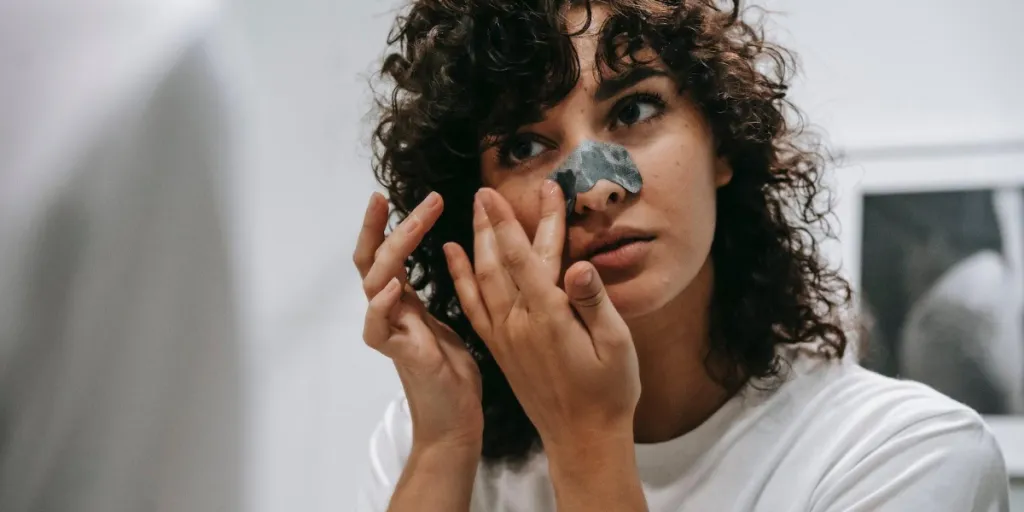Nose strips are an instant skincare treatment that aid consumers to attain radiant skin. Based on Google Ads data, they receive 49,500 monthly searches, reflecting their continued popularity – and why wouldn’t they be? Both fast and affordable, they’re a great way to remove impurities from the user’s nose.
Interested in profiting from this market? Here, we’ll detail everything you need to know about what consumers are looking for in nose strips in 2024.
Table of Contents
What are nose strips, and are they effective?
Are nose strips safe for the skin?
Six factors to consider when choosing nose strips in 2024
Final words
What are nose strips, and are they effective?
Nose strips are a bit like a magnet for the skin, extracting accumulated oil, dirt, blackheads, and whiteheads from the user’s pores. Thanks to an adhesive that sticks them to the nose, they take all the icky stuff away with them when they are removed.
Nose strips are therefore a straightforward way to temporarily exfoliate the skin, providing fast and evident revitalization without breaking the bank.
Are nose strips safe for the skin?
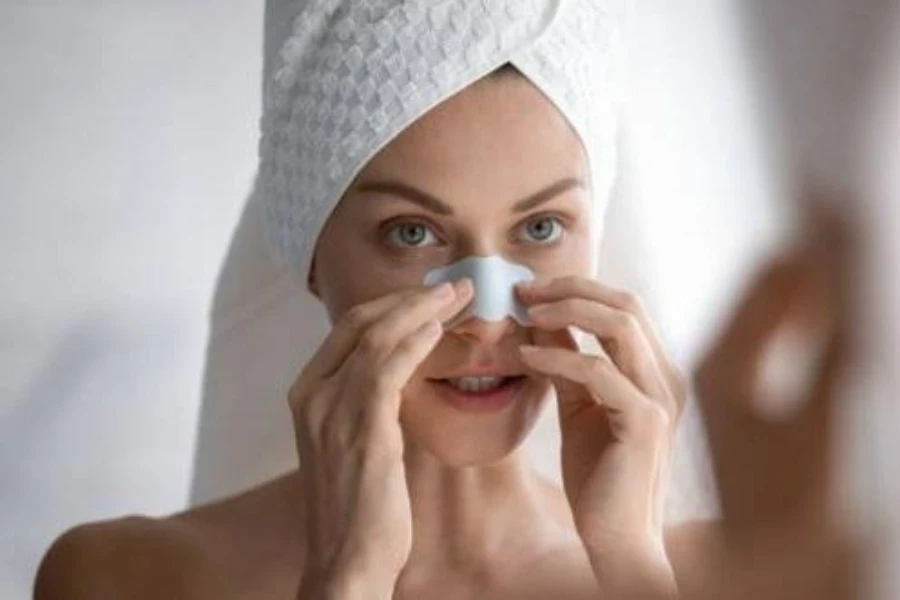
After years of research, it’s clear that nose strips are a completely safe means of cleaning the skin. Sticking to the top layer of the skin via skin-kind adhesives, nose strips pull away any dead skin or unwanted substances once hardened. Unlike other skincare treatments, this purification method is non-invasive and does not involve harsh chemicals.
Six factors to consider when choosing nose strips in 2024
Skin type

Nose strips, while they can benefit every skin type by cleansing pores, may work better on certain skin types than others. Therefore, nose strips are made using different formulas, meaning that consumers can always find the perfect variety for them.
For example, consumers with dry skin will appreciate nose strips that contain hyaluronic acid because they can help to simultaneously moisturize the skin. Conversely, super absorbent nose strips work best to help suck out sebum for consumers with oily skin. For consumers with sensitive skin, fragrance-free, non-abrasive nose strips will reduce the chances of skin irritation.
Ingredients
Now more than ever, consumers are interested in the product’s ingredients. No one wants to purchase a product that could adversely affect their health or harm the environment. For this reason, businesses must ensure that the nose strips the stock contain 0% toxic materials.
Always read the manufacturer’s nose strip ingredients list, noting that aloe vera, bamboo charcoal, hydrocolloid, salicylic acid, tea tree oil, and witch hazel are generally considered safe, gentle on the skin, and boast hydrating effects.
Businesses should also invest in hypoallergenic nose strips to avoid consumers encountering allergic reactions and irritations. Nose strips containing artificial colors, parabens, and sulfates should also be avoided as they may be detrimental to the user’s skin.
Application process
Nose strips are a DIY piece of beauty kit that help exfoliate and clean the surface layer of the nose’s pores. The keyword here is “do it yourself!” So, when choosing nose strips, businesses should consider how easy they will be for consumers to use. Anything with too many steps may be a major turn-off for consumers who want a quick fix.
The best rule of thumb is to pick nose strips with a simple design and application process. How do you know that that is the case? The answer lies in the packaging, which is where you’ll most likely find details of the application process. In addition, look for nose strips whose drying time does not exceed 20 minutes.
Size and shape
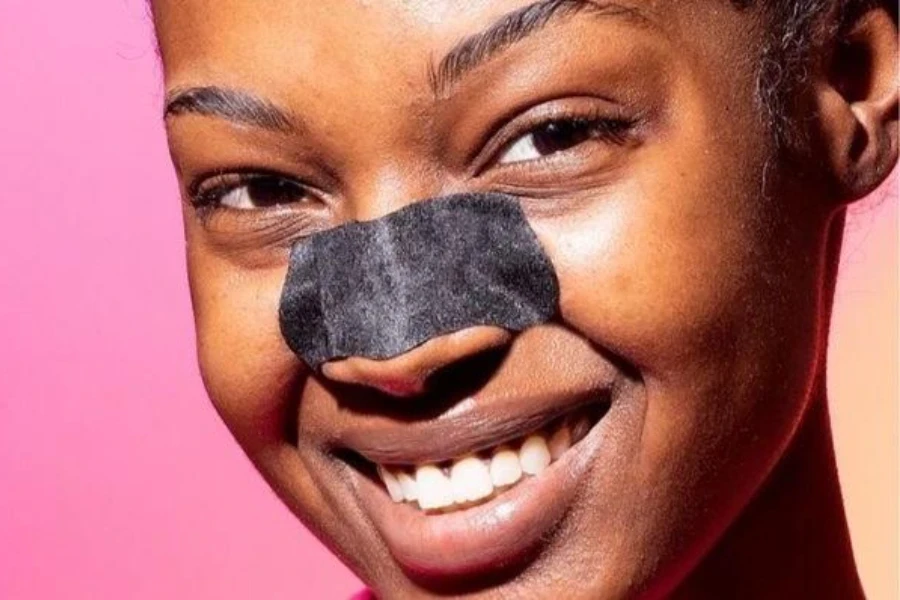
Nose strips come in different shapes and sizes so as to suit the various nose contours. This ensures that they are easy to apply and remove comfortably.
Even in the case where the wearers’ facial features vary significantly, nose strips work best when covering the entire nose. However, they shouldn’t extend beyond the nose area, as removing them might cause discomfort and leave other areas of the skin red.
Adhesion and removal
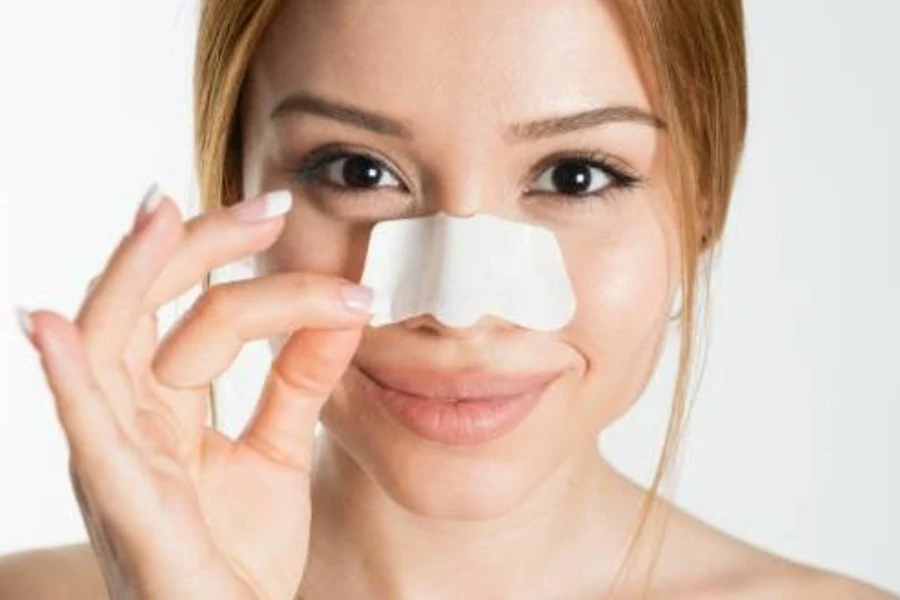
The whole point of nose strips is for them to stick to the nose and remove blemishes. This process is seriously devalued if the strip’s adhesive doesn’t work properly; nose strips that don’t stick won’t remove anything, while those that are too sticky may prove difficult to remove, potentially damaging the skin.
Hydrocolloid is the best adhesive for nose strips to use. Hydrocolloid is a gel-like substance that sticks to the skin and gently extracts sebum, promoting the quick healing of acne on the nose. Other healthy adhesive options include polyvinyl acetate and acrylate-based adhesives.
We’d recommend avoiding nose strips with adhesives that contain sulfates and phthalates as they often contain fragrances and preservatives that may be toxic to the skin.
Additional benefits
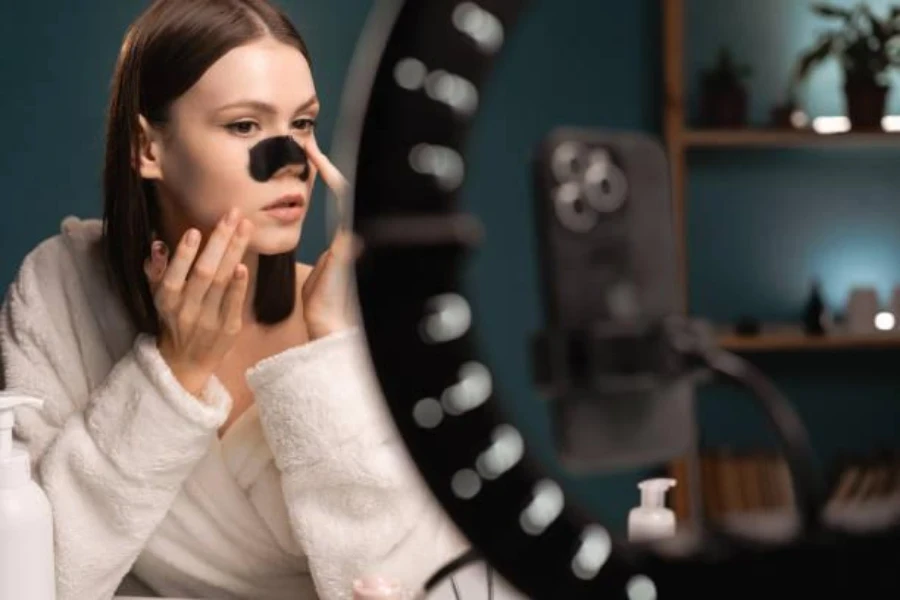
Nose strips primarily cleanse the nose of dirt, oil, blackheads, and whiteheads. But they wouldn’t be so popular if that’s all they did.
Below are just some of the other benefits that businesses can use to promote nose strips:
- They remove dead skin cells from the nose
- They improve skin texture around the nose
- They can help to shrink pores
- They even out the user’s complexion
- They reduce the risk of acne resurfacing
Final words
Nose strips are making waves in the beauty market as instant tools for achieving bright and healthy skin. However, their efficiency is only as good as their quality.
To provide consumers with the best nose strips, you should consider the consumer’s skin type, ingredients, application process, shape, size, adhesion, removal, and additional benefits. Prioritize these factors to find greater success in selling in 2024.
For a massive range of nose strips and other beauty products, head to Alibaba.com.
